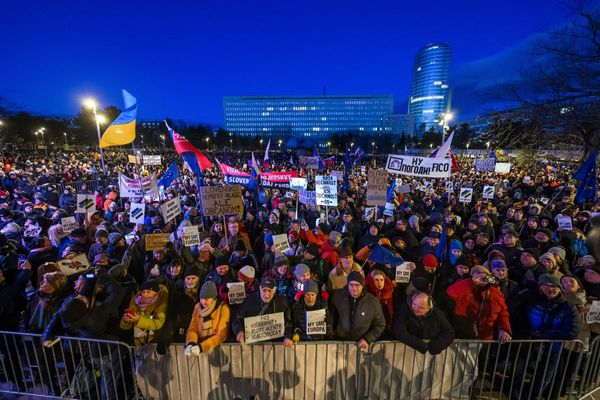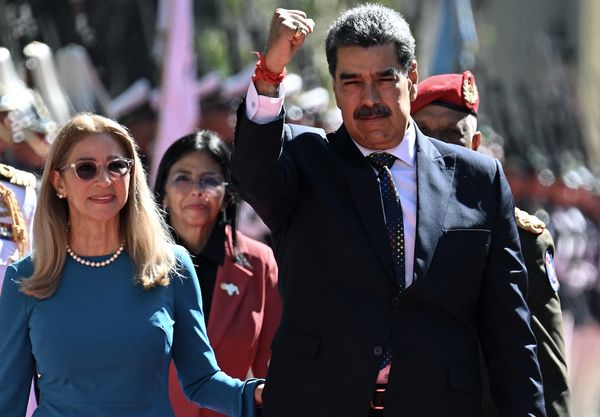
Last year the 237,000 highest paid employees in America together made more money than the lowest paid 60 million workers, my analysis of the latest federal wage statistics shows.
The top employees collected $659.3 billion for their work last year.
The worst paid 60 million workers earned $628.3 billion, about 5% less than the fat cats at the top of the pay ladder.
These pay figures illustrate a long-term trend, heavily influenced by federal government policy, to restrain wages paid to the vast majority and to focus pay increases at the top, especially Congressional antipathy to unions. Without unions, workers have little to no bargaining power.
The bosses hold Executive Class jobs—which DCReport defines as those paying $1 million or more. Million dollar and up positions are the fasted growing jobs in America both in growth rate and pay. And the rate of growth is accelerating.
Over the last three decades the Executive Class grew 325%, ten times the growth in the overall workforce, which increased 33%.
Last year alone, however, the number of Executive Class jobs grew 95 times faster than jobs overall, my analysis of the latest Social Security Wage Statistics report shows. Total jobs grew by 0.3% in 2021 while Executive Class jobs grew by 28.5%.
The 60 million workers at the bottom all made $25,000 or less. That means many of them worked part-time.
Looking only at full-time workers, those making at least $15,000, still shows a huge pay gap. The lowest paid 30 million full-time workers made less than the total paid to those 506 bosses at the top, my analysis of the wage data shows.
This deep and rapidly widening chasm in pay between those at the top and bottom is likely to continue growing under existing federal labor laws, tax policies and spending policies. Last year the 97% of full-time workers making less than $325,000 got pay raises averaging 2.7% while inflation ran 4.7%, leaving the typical worker $1,200 worse off in terms of buying power.
Who is responsible for this? Ultimately the voters are because they chose the Representatives, Senators and President who create the policies that encourage more for the haves and less for 97% of full-time workers and more than 99% of all workers, including part-timers.
Stark Divide
The stark divide between those at the very top of the pay ladder and the 166 millions people earning less than $250,000 a year, especially those in the lowest paying jobs, illustrates how the fruits of America's economic success are benefitting only a thin sliver of society at the top.
I've been analyzing the annual pay statistics for more than a quarter of a century, documenting the steady shift in the share of all American wages and salaries going to those making more than $100,000, and especially to the $1 million and up Executive Class, with flat to falling wages for everyone else.
The savings and investments that the best paid employees can afford only widen the distance between America's once vibrant but now hollowed out Middle Class and the Executive Class.
This divide plays a major role in fueling the rejection of democracy by many millions of Americans who, both polls and vote results show, are willing to throw away their liberties in the false hope that a dictatorial system will somehow alleviate their financial stress. Donald Trump and other would be dictators promise to alleviate financial pain but their policy pronouncements would do the opposite, instead further enriching the already rich.
The problem in may disparities traces back to voters abandoning the New Deal in 1980 and adopting the pro-business, pro-rich policies proposed in 1980 by Ronald Reagan.
In 1991 the Executive Class collected 2% of all pay. Last year they pocketed 6.7%. Search for this indisputable fact and the only place you will find it is at DCReport and the news organizations we let reprint our work for free.
In 1991 just 55,823 workers made $1 million or more in today's money. [See footnote] Now that group totals 237,331 people, more than four times as many.
About one in 2,300 people got Executive Class pay in 1991. By 2020 one in 900 workers got Executive Class pay. Last year one in 700 did. This trend shows how Corporate America turns a firehose of greenbacks on its leaders but provides only a trickle of coins for the people whose labors generate the profits.
Revealing Indicator
The most revealing indicator of how the national wage pie is being resliced to favor those at the top is shown by the rapid increase in Executive Class jobs paying more than $50 million per year.
The $50 million and up jobs category was added by Social Security in 1997. The number of these super high paying jobs increased 38-fold in the next 24 years.
Just 13 employees made $50 million or more in 1997.
Last year 506 people held such highly paid jobs. Their average pay: $151 million. To be exact: $150,992,544.25. In all they collected more than $76 billion.
These pay figures illustrate a long-term trend, heavily influenced by federal government policy, to restrain wages paid to the vast majority and to focus pay increases at the top, especially Congressional antipathy to unions. Without unions workers have little to no bargaining power. Congress has passed numerous laws that hobble unions and require intensely detailed reporting of salaries and expenses, rules that Congress doesn't apply to business.
Congress puts additional downward pressure on wages by keeping the minimum hourly wage at the $7.25 level that took effect in 2009.
Why Isn't This MSM News?
Try as you may, you won't find these fact and many more anywhere except DCReport and outlets that we let republish our work for free. I've analyzed the annual wage statistics report for more than a quarter century but have been unable to persuade any of our major news organizations to follow suit since I left The New York Times 14 years ago.
It's hard to imagine any work so distasteful that it requires a paycheck of neatly $3 million a week to motivate performance. Of course, that's not how pay works. The worst jobs tend to pay the least. Think underground construction and mining, foundries, dishwashing, and janitorial service. Physical drudgery, often combined with low status, equals bad pay no matter how much we need minerals mined underground, molten metals to form products, clean dishes in eateries and clean public toilets.
Jobs that pay a million or more per week come with lavish fringe and retirement benefits, corporate jet travel (with massive subsidies for personal use) and a retinue of aides to handle every care, all paid for by investors. Public and coworker adulation and even envy enrich these jobs even more.
Executive Class expense accounts also subsidize Executive Class lifestyles. In the late 1980s I was shown the financial summary of a CEO's expense account. It totaled more than $2 million (almost $5 million in today's money). The document was supposed to be introduced into the public record the next day but wasn't so I couldn't use it. But still, it gives you an idea of Executive Class lifestyles at the very top.
Not everyone in what DCReport calls the Executive Class is an executive. Anyone who gets a wage or salary and an end of the year W-2 wage statement is included in the annual Social Security wage reports. Bestselling novelists, Major League home run hitters, top actors, and singers show up in this data.
Trump Tax Law Effects
The number of $50 million and up employees has exploded since the Trump/Radical Republican tax law took effect in 2018 and the Trump Administration lavished taxpayer funds on big companies during the pandemic.
There were just 205 such super high paying jobs in 2017 the last year under the old tax law. There were 201 such jobs in 2018, 222 in 2019, a figure that jumped to 358 in the pandemic year 2020 and then to 506 last year.
The number of these super paying jobs rose as companies grew flush with cash from years of enjoying the much lower tax rates that started in 2018. That year corporate tax revenues fell by a third.
Donald Trump and his allies promised this money would fuel investments that create jobs. But much of the money was used instead for stock buybacks, which enhance the value of executive stock options, and to increase Executive Class paychecks. Buybacks and fatter Executive Class paychecks don't stimulate growth, don't create new jobs and certainly don't encourage paying more to the vast majority of workers.
There is a bit of good news in the rise of Executive Class pay. In 2020, the Executive Class raked in 82% of all the increased pay in America, DCReport showed a year ago. In 2021 they raked in just 29% of all pay hikes.
The difference between those years?
Hardly anyone got a pay raise in 2020 as the pandemic savaged the economy—except those in the Executive Class—while in 2021 modest pay raises for the hoi polloi were widespread.
Average pay raises for those below the Executive Class averaged just $76 in 2020, not that anyone would notice.
Median pay—half make more, half less—rose in 2020 by a mere $26. That's for the entire year so it's less than 50-cents a week. Many workers in the lower half of the pay scale got no raise. Nearly all 2020 pay raises went to the top tenth of the workforce, those making at least $100,000, with nearly all of that flowing to the Executive Class.
Last year full-time workers making up to $250,000 got an average raise of $1,600. Executive Class raises averaged $840,500 or 500 times as much.
These pay disparities explain much of the widespread discontent in America that fuels support for politicians who would take away our liberties and replace our democracy with dictatorial policies, a concern I have been writing about for more than a quarter century.
That fewer than a quarter million of America's nearly 170 million employees collected close to a third of all the pay increases last year shows how our elected leaders have allowed the corporate rich to rig our economy in their favor. Government indulgences dating back four decades that have minimized competition and encouraged monopolies, duopolies, and oligopolies also favor the Executive Class over rank-and-file workers. So do contracts that prohibit many workers, even some blue collar workers, from taking a job at another company in the same industry.
I documented many of these subtle and severe policies of upward redistribution of income and wealth earlier in this century in my award winning and bestselling economic trilogy, "Perfectly Legal, Free Lunch, and The Fine Print." All remain in print.
The First Part and today's Second Part of my reporting on the new wage statistics focused on full-time workers. Part Three will look at part-timers, the one in four American workers making less than $15,000 a year. The pay story for these 41 million people is a mix of good and bad news.
Footnote: For 1991, I included in the Executive Class those paid $500,000 and up because that threshold in 2021 money was $1 million because prices doubled over those 30 years.







